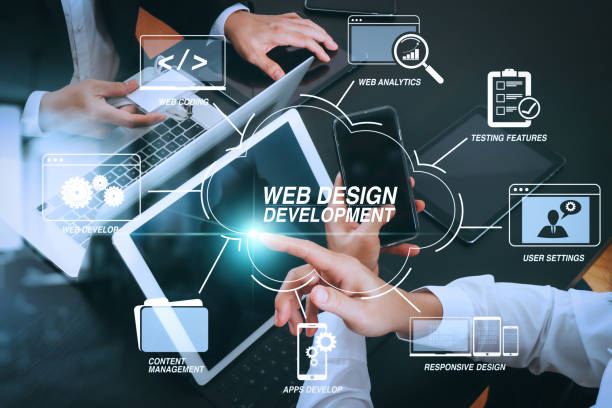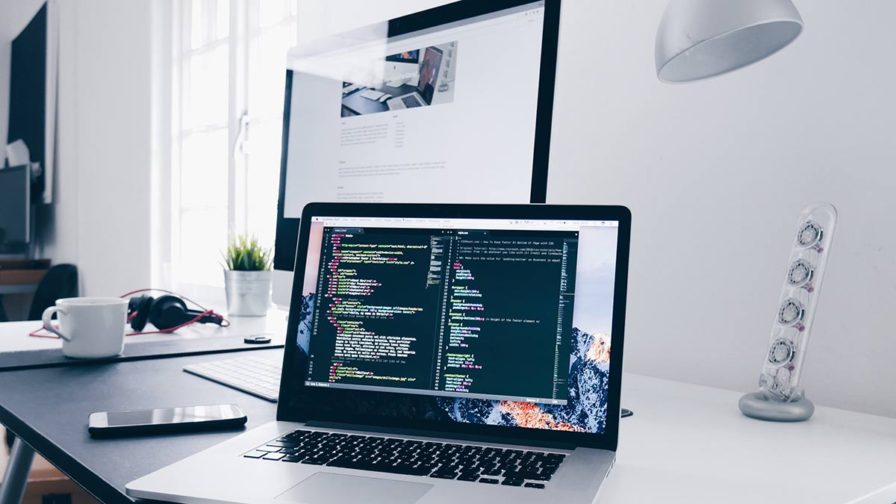Aligned Position Web Design: Delivering High-Quality, User-Friendly Web Designs for Every Industry
Aligned Position Web Design: Delivering High-Quality, User-Friendly Web Designs for Every Industry
Blog Article
The Most Effective Kinds of Web Layout to Enhance Customer Experience and Interaction
In the ever-evolving landscape of digital communication, the effectiveness of Web layout significantly affects user experience and involvement. Various design methods, such as minimalist, receptive, and interactive layouts, each offer one-of-a-kind benefits that can provide to varied individual demands. Recognizing which sorts of website design ideal offer these objectives can be essential for businesses intending to boost customer contentment and retention. However, the question continues to be: which design elements genuinely reverberate with customers and foster purposeful engagement? The exploration of these concepts exposes critical insights that may redefine your technique to website design.
Minimal Web Design
As electronic landscapes come to be significantly chaotic, minimal website design has actually arised as a powerful technique to enhancing user experience. This design philosophy focuses on simpleness, concentrating on crucial aspects while eliminating unnecessary diversions. By making use of sufficient white space, straightforward navigation, and a minimal color combination, minimalist design cultivates clearness and directs customer focus to crucial material.
The core principle of minimal Web design is to develop a smooth interaction for customers. By lowering cognitive tons, users can quickly understand information without really feeling overwhelmed. This straight technique not only improves use however also urges engagement, as visitors are most likely to check out a website that is visually enticing and very easy to browse.
Furthermore, minimalist design frequently stresses typography and imagery, making use of these elements purposefully to convey messages effectively. This concentrate on important parts can enhance brand name identification and create a remarkable user experience. Essentially, minimalist website design is not simply a trend; it is a thoughtful method that identifies the significance of user-centered layout. By stripping away additional aspects, developers can produce an extra appealing, reliable, and enjoyable Web experience for all individuals.
Receptive Web Style
In today's varied electronic setting, receptive Web layout has come to be vital for developing a smooth customer experience across a wide range of gadgets. As customers gain access to web sites on mobile phones, laptop computers, tablet computers, and desktop computers, the ability of a site to adapt its layout and content to different screen sizes and resolutions is crucial.
Responsive website design utilizes flexible grids, images, and CSS media questions to make certain that Web material is provided optimally, no matter the tool made use of. This strategy not just boosts the aesthetic allure of an internet site but also significantly boosts use. Individuals are most likely to engage with a site that provides a consistent experience, as it removes the disappointment of having to focus or scroll exceedingly.
By taking on responsive layout, companies can boost their visibility and reach a broader target market. In summary, receptive Web style is a fundamental method that enhances individual experience, involvement, and overall contentment.
Interactive Website Design
Responsive Web layout lays the foundation for enhancing user experience, but interactive Web style takes this an action additionally by involving users in a much more vibrant means - Aligned Position Web Design. By incorporating aspects such as computer animations, clickable models, and real-time responses, interactive website design captivates users, drawing them right into a richer surfing experience
This technique not just fosters engagement however likewise motivates customers to explore content actively instead of passively eating it. Methods such as gamification, where customers make benefits for completing jobs, can dramatically boost the moment invested on a website and boost total complete satisfaction. Moreover, interactive functions can simplify complex info, making it a lot more satisfying and absorbable.

Incorporating interactive layout elements can likewise lead to higher conversion rates, as users are more probable to involve with a website that proactively includes them. Aligned Position Web Design. Inevitably, interactive website design changes user experiences into remarkable journeys, guaranteeing that site visitors useful source return time and again
Flat Style
Defined by its minimalistic method, level layout stresses simpleness and capability, removing away unneeded elements and focusing on vital functions. This style ideology focuses on use, guaranteeing that users can browse user interfaces easily and performance. By using a tidy aesthetic, flat style gets rid of the clutter typically discovered in much more elaborate designs, thereby enhancing customer concentrate on material and performance.
The trademark of level layout hinges on its usage of strong colors, simple typography, and geometric shapes. These aspects add to an aesthetically enticing user interface that is both friendly and modern-day. Furthermore, flat layout cultivates a sense of clarity, enabling users to determine necessary actions and information without distraction.
In addition, flat design is specifically reliable in responsive Web style, as its simplicity converts well across various gadgets and screen dimensions. The absence of intricate click over here now appearances and gradients decreases packing times, which is essential for keeping individual engagement. As electronic landscapes remain to progress, flat style remains a pertinent choice for developing easy to use internet sites that boost total experience. By focusing on crucial functions, flat style not just satisfies individual needs yet also motivates smooth interaction, making it an essential component of efficient website design approaches.
Flexible Web Layout
Adaptive website design tailors the customer experience by creating multiple repaired layouts tailored to different display dimensions and tools. Unlike receptive layout, which fluidly adjusts a single layout, adaptive design utilizes unique designs for certain breakpoints, ensuring optimal presentation on various platforms. This approach allows designers to concentrate on the one-of-a-kind qualities of each gadget, improving functionality by providing exactly what individuals need based on their context.
One of the primary benefits of flexible Web style is its ability to optimize lots times and efficiency. By serving customized web content and photos that fit the individual's device, websites can lessen data use and boost loading speeds. This is particularly advantageous for individuals with slower links or limited data strategies.

Additionally, adaptive style helps with a much more regulated and consistent branding experience. Given that developers create multiple formats, they can guarantee that the aesthetic elements straighten with the brand's identity across different platforms - Aligned Position Web Design. This causes a cohesive customer experience, enhancing interaction and advertising user retention
Conclusion
To conclude, the assimilation of minimal, responsive, and interactive website design principles substantially enhances user experience and interaction. Minimalist design promotes quality and emphasis, while receptive layout ensures adaptability across numerous gadgets, advertising ease of access. Interactive layout mesmerizes customers through vibrant aspects, encouraging expedition and customization. Jointly, these style comes close to add to the creation of easy to use environments that not only boost satisfaction however also drive higher conversion rates, highlighting their critical importance in contemporary Web layout methods.

Minimal design cultivates clearness and focus, while responsive style guarantees versatility across numerous tools, advertising ease of access. Jointly, these design comes close to add to the development of straightforward atmospheres that not only boost satisfaction but likewise drive greater conversion prices, highlighting their essential importance in contemporary Web layout strategies.
Report this page